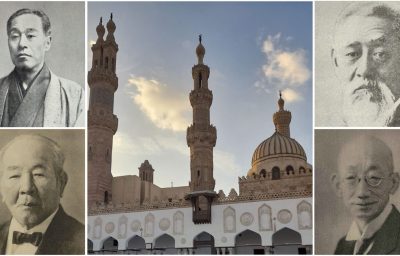COMMUNICATIONS
Fifteen Years of Preserving Cultural Heritage in China: Towards the Reconstruction of Cultural Heritage Studies
The background to my study of cultural heritage preservation in China was an international collaborative research project engaging the University of Tokyo and Tsinghua University that began in 1985. It involved historical research on coastline cities and architecture in East Asia. I participated as a graduate student, but I felt unease that the project’s objectives did not go beyond historical research.
The global history perspective that grasped the emergence of architecture and cities broadly within the framework of East Asia sparked my intellectual curiosity. However, issues of the preservation of specific architectural clusters which we were studying were simply pointed out, nothing more. Practical problems remained unattended to.
My interest deepened, and fully fifteen years have passed now since I moved to China, prompted by an invitation from Tientsin University in September 2006. I had three objectives: 1) to create a research center for the preservation of cultural heritage; 2) to engage in actual practice of cultural preservation (See the illustrations for the preservation plans of the author's charge.); and 3) the creation of an education program that would nurture specialist who could bear the burden of cultural heritage preservation.
With regard to the research center for the preservation of cultural heritage, after a two-year period of preparation, the center was recognized officially in 2008 as the Chinese Cultural Heritage Preservation International Research Center. I was appointed as inaugural center chair by the university’s president, and this is the position I continue to occupy.
The special feature of the center is, as its name suggests, to set about the preservation of Chinese cultural heritage from an international perspective and with international cooperation. The word “international” may no longer sound especially fresh, but cultural projects are always closely related to the identity of the country concerned, and so international cultural heritage preservation remains to this day an issue.
Recent years have seen the birth of many “collaborative, innovative centers” in China, and all are aimed precisely at innovation. My interpretation of those key words is that there can be no innovation, no breakthrough, without collaboration. My personal experience gives me a real sense that collaborative endeavors lead to a deepening of mutual understanding and to the identifying of a higher order of compromise.
Changes in the circumstances regarding cultural heritage are considerable, and the situation is that pre-existing education programs cannot keep pace. Programs that are both multidisciplinary and broader are called for. In setting my sights on an ambitious future plan for the reconstruction of cultural heritage studies, Nichibunken’s research base is immensely attractive. My dream is one day to lead a collaborative project involving scholars from both China and Japan.

Figure 1. Majishan Grottos Preservation Plan: Completion Estimation Chart
Shortly after taking up my post, I set about planning for the preservation of the Majishan Grottos on the Silk Road. The Majishan Grottos, which derive their name from their resemblance to a pile of straw, are counted as one of the four great grottos of China. The others are the Mogao Grottos in Dunhuang, the Yungang Grottos in Datong, and the Longmen Grottoes in Luoyang (Majishan Grottos Preservation Project, Tianjin University Research Institute of Architectural Design and Urban Planning Co, Ltd., December 2007).

Figure 2. Taku Dockyard Preservation Plan
I next set about designing a preservation plan for the Taku Dockyard in Tientsin. The shipyard is literally a site for building ships, but it comprises multiple elements, so much so that it is referred to as “a floating city,” and people live and work there over extended periods. European advanced technologies are all collected on that site, and it is a representative legacy of the industrial revolution. It was designated a National Key Cultural Relic Protected Unit 2013 (The Conservation Planning for North Navy’s Taku Dockyard. International Research Center for Chinese Cultural Heritage Conservation, Tianjin University, July 2018).

Figure 3. Qixian County, Shanxi Province, Old Town
Among the projects we are presently engaged with is a comprehensive preservation project for the Old Town in Qixian County, Shanxi Province. (The author is team leader.) This is a project which has benefited from a sizable investment by the French government. It has acquired the status of a test case in cultural heritage preservation projects in China. The Old Town is based on a castle town, constructed during the Northern Wei period, and its streets, houses, shops, temples and shrines have preserved the feel of the Ming and Chin dynasties. They are of great value for understanding the lived spaces and the history of those ages.

Figure 4. Reception of the Chinese Government Friendship Award at the Great Hall of the People in Beijing
In September 2019, I received the Chinese Government Friendship Award, the highest honor bestowed on foreign specialists. I was the first to receive the honor in the field of cultural heritage preservation.




